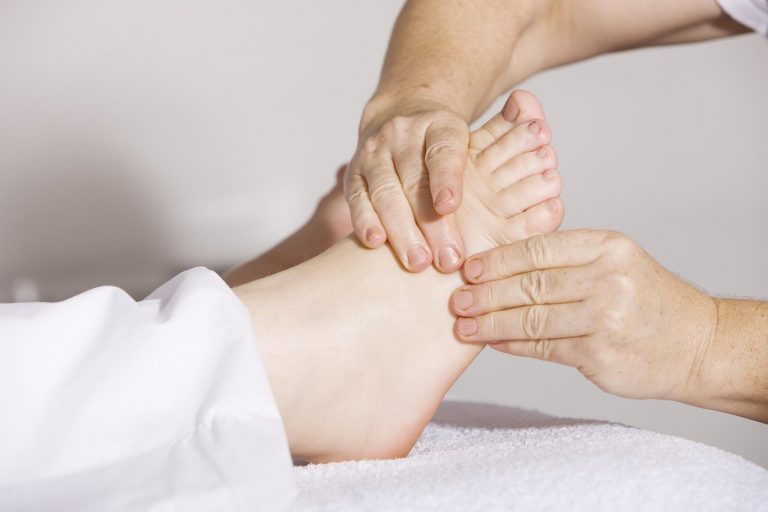
Reflexology
For thousands of years, the Chinese and Egyptians have practiced reflexology. It is an alternative treatment for a variety of health and medical conditions. By applying pressure to specific areas of the feet, hands, and ears specific reflex areas of the body can be treated. Each area of the body is connected to a particular pressure point in the feet, hands, and ears.
WHAT IS REFLEXOLOGY?
Reflexology is a compression technique that focuses on specific pressure points in the hands and feet. These pressure points contain nerve endings that can cause reflex responses throughout the body and through light and steady pressure, the activation of these impulses can promote healing and relaxation throughout the body. If you’re new to reflexology, what can you expect from these treatments and how can you assure you’re getting everything out if that you can. This ancient form of therapy focuses on healing in the body by activating certain pressure points in the hands and feet. Reflexology is based on the idea that specific reflex areas interact with our vital organs and the overall functioning of our bodies. As offered by Get Well Physio, the stimulation of foot reflexes is the most common form of reflexology and can have immense health benefits.
WHAT DOES REFLEXOLOGY TREAT?
Reflexology triggers relaxation, resulting in reduced levels of stress and tension. This practice is also helpful in increasing blood flow and circulation throughout the body. While reflexology should not be used as a replacement for medical therapy, it can nicely complement your ongoing medical treatments.
REFLEXOLOGY CAN MINIMIZE THE SYMPTOMS ASSOCIATED WITH:
- Stress
- Tension or migraine headaches
- Arthritis
- Menopause
- Infertility
- Menstrual pain
- Back pain
REFLEXOLOGY CAN RESULT IN:
- Deeper sleep
- Improved digestion
- Increased cell function
- Healthier skin
- Breakdown of congestion
- Improved mobility and flexibility
AFTER EFFECTS
The effects of reflexology are unique to the individual. While some will experience a sense of relaxation and well-being, others find it to be quite energizing. Your body’s response to the treatment could be instantaneous, however, most people usually notice the full benefits after 4-6 sessions.
HOW TO REAP THE BENEFITS OF REFLEXOLOGY?
After-care for treatments is crucial to its efficacy. In order to aid the healing process and gain the maximum benefits, in the 12 hours after treatment you should:
1. STAY HYDRATED
Do your best to drink plenty of water to help flush the excess toxins and waste released by the reflexology. Pro-tip: hydrating your body before treatment is equally as important. Staying hydrated will prevent excess soreness, improve metabolic waste, and aid in detoxification. Aim to drink half of your body weight in ounces per day, especially on treatment days.
2. EAT LIGHT
Avoid heavy meals for up to two hours after your treatment. While nourishment is important, eating a large meal will divert blood to your digestive tracts, rather than to the areas of the body needing the oxygen and nutrients for healing. If needed, consider eating a light snack such as a piece of fruit or some veggies.
3. AVOID CAFFEINE
Beverages such as coffee, teas, and sodas contain stimulants that can dehydrate your body and increase your heart rate. This can trigger or elevate symptoms of anxiety, potentially counteracting the benefits of your reflexology treatment.
4. AVOID ALCOHOL
This is an extremely important substance to avoid after a treatment. Alcohol has diuretic effects, impairs judgment, and can undo the benefits reaped from treatment. Try to avoid alcohol and smoking for up to 24 hours, as the effects are intensified post-treatment.
5. REST AND RELAX
It’s important to let your body recover naturally after a session of reflexology. Give your body time to relax during the day and be sure to indulge in a good night’s sleep.
5. ADVERSE EFFECTS
With any treatment, there is the possibility to experience some temporary negative symptoms. Any side effects should pass within 24 hours and can be minimized by following the tips above. However, don’t be concerned if you experience mild effects of the following symptoms:
- A temporary worsening of your symptoms
- Fatigue
- Chills (feeling hot and cold)
- Intensified emotions
- Headache
- Irritability or restlessness
- Clamminess of the hands and feet
- Runny nose
- Skin reaction
- Nausea
- Dizziness
- Diarrhea
